This gluten-free pound cake recipe makes a dense and buttery cake. It’s made with gluten-free flour, butter, sugar, eggs, and just a little baking powder to lighten it. Serve it plain or with whipped cream and fresh berries.
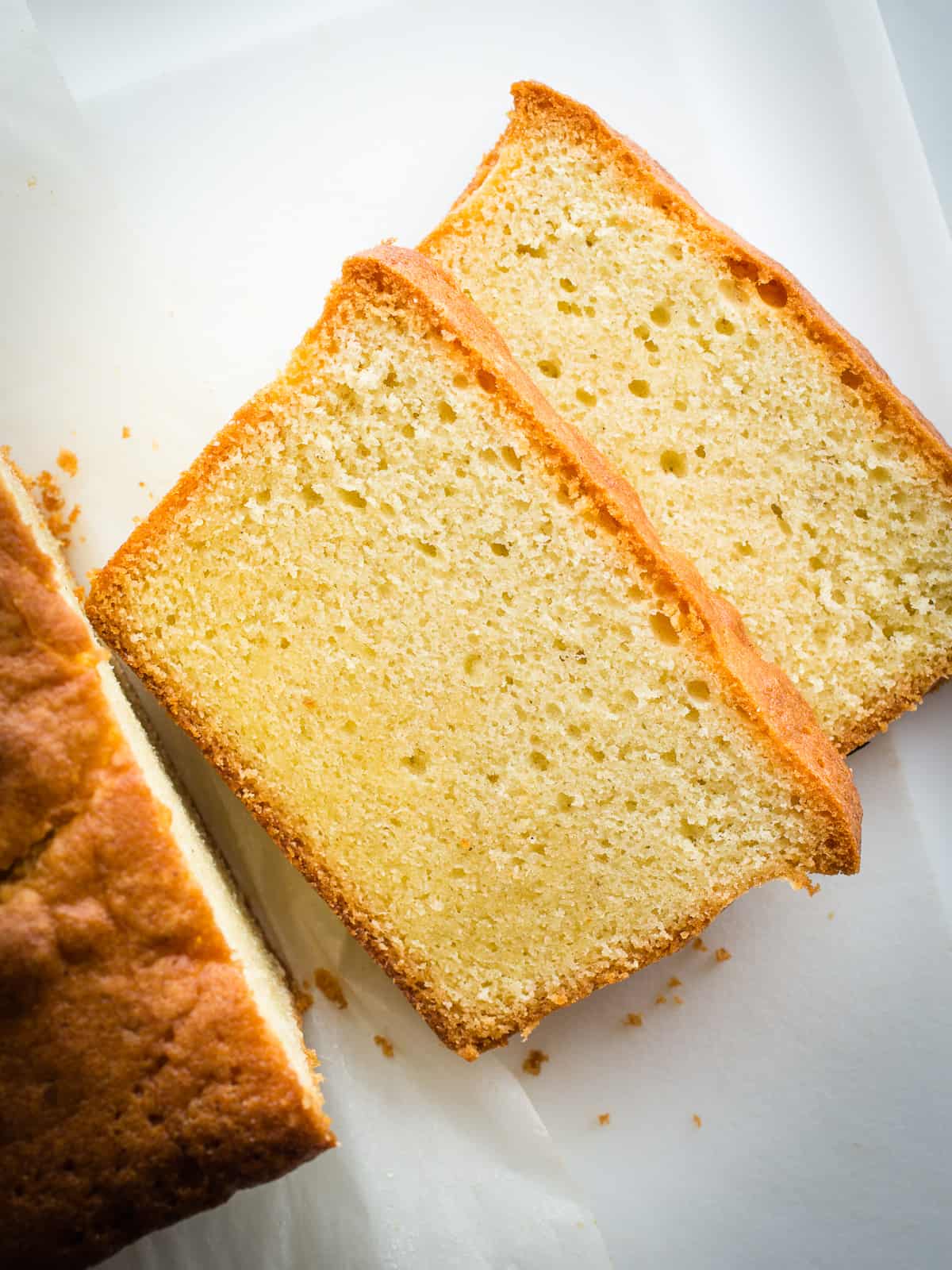
Pound cakes date back to the early 18th century. They’re dense, butter-based cakes. The original recipes called for a pound of butter, a pound of sugar, a pound of eggs, and a pound of flour. And that’s where it gets the name pound cake. Neat, huh?
This recipe is inspired by those original pound cakes. And in a nod to today’s tastes, it contains just a baking powder to give it a dense but light crumb.
Gluten-Free Pound Cake Ingredients and Substitutions.
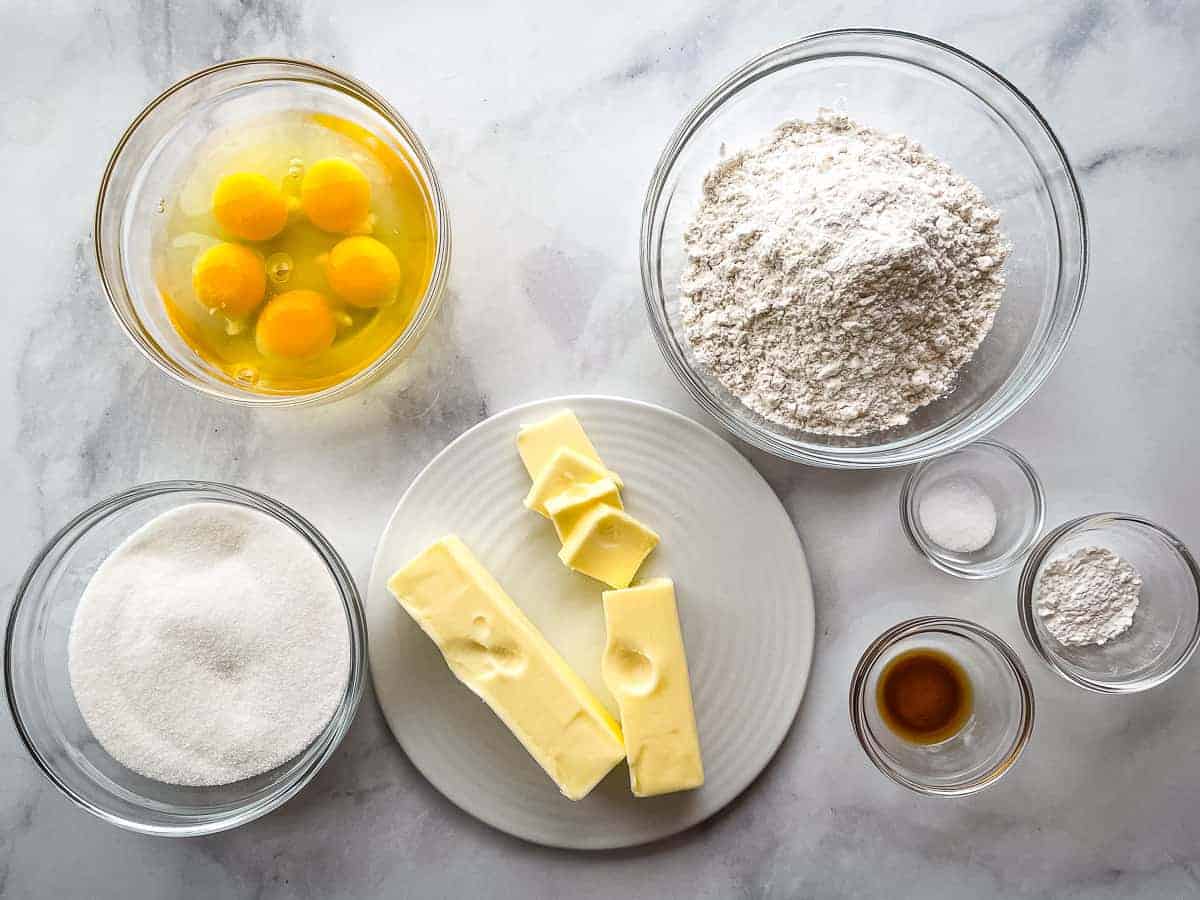
Here are the ingredients you need to make this recipe. As with all gluten-free baking, changing the ingredients can affect the final texture of the cake. The following ingredients work best for this pound cake.
- Butter. The flavor and texture of a great pound cake come from butter. Both salted and unsalted work in this recipe.
Substitution: for a dairy-free pound cake, use a dairy-free butter that’s suitable for baking. - Sugar. Granulated (table) sugar sweetens the cake.
- Eggs. The eggs provide structure, richness, and help the cake to rise. For the best texture, use room temperature, not cold eggs.
Note: This pound cake recipe doesn’t work well with egg replacers. - Gluten-Free Flour. Use a gluten-free flour that contains xanthan gum. If your blend doesn’t include it, whisk a half teaspoon into the flour before using.
- Baking Powder. Traditional pound cake recipes don’t include baking powder. This makes for a very heavy cake. To suit our modern tastes, a little baking powder is included in the recipe to help lighten the cake slightly.
- Vanilla Extract. (optional) It surprises people that vanilla is an optional ingredient. As much as I love vanilla, I find that a pound cake doesn’t need it. The butter flavor tastes center stage. If you’d like to use it, add up to two teaspoons to the batter.
- Salt. A little salt enhances the flavor.
How to Make a Perfect Gluten-Free Pound Cake. Step-by-Step.
This pound cake is pretty simple to make. Start by mixing the butter until it’s light, add the gluten-free flour, and mix until the batter forms. The most important step: use softened butter. Let’s take a look at those steps one-by-one.
Start with Softened Butter.
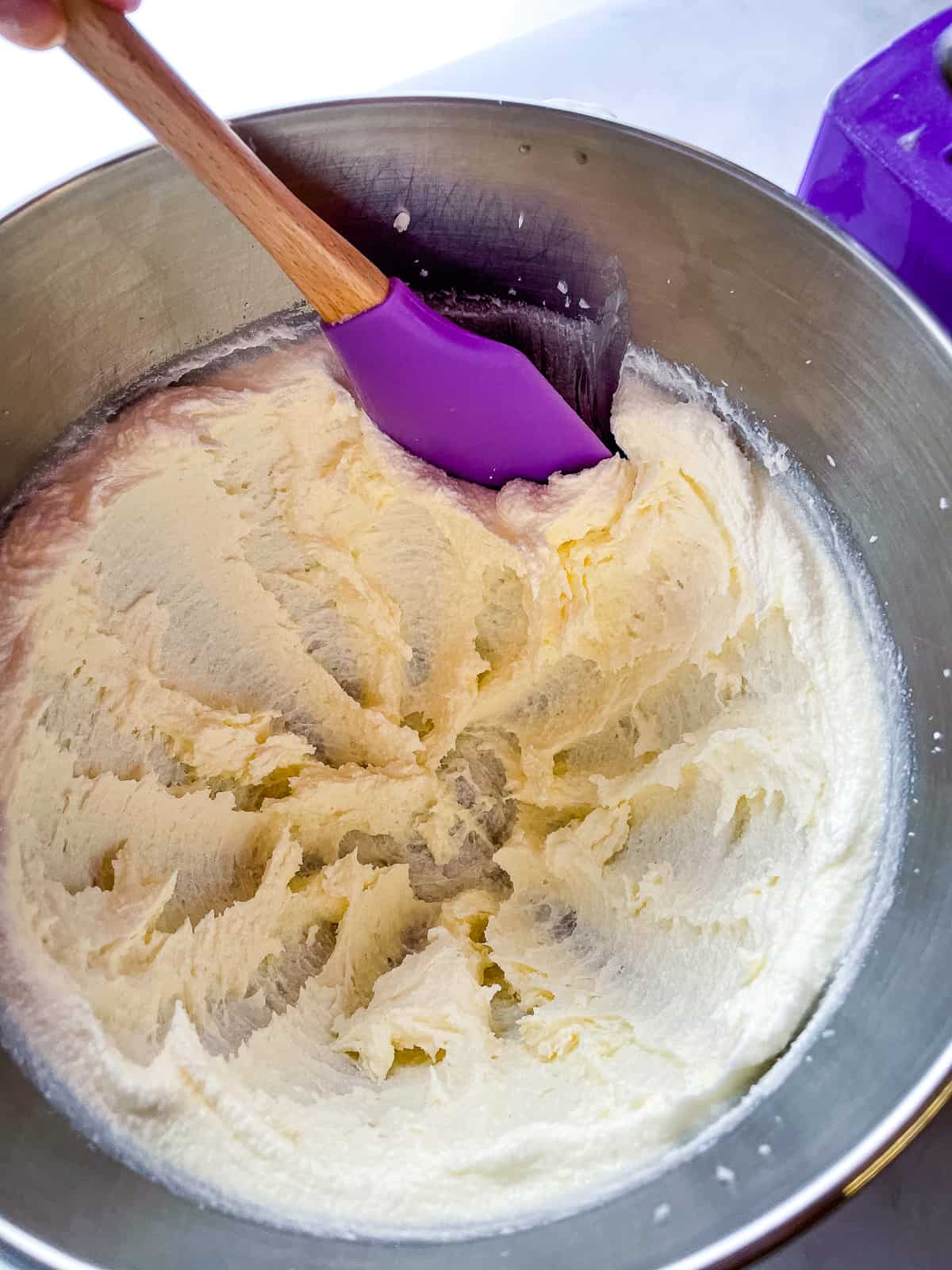
The temperature of the butter really matters when making a pound cake. If the butter is too cold, the cake comes out dense and heavy. If it’s too warm, the cake feels greasy.
The best butter temperature for pound cake is between 65°F and 68°F (18°C and 20°C.) At this temperature, the butter fluffs up nicely. And that’s what we’re aiming for: fluffy butter.
Mix the Butter, Sugar, and Eggs Until Light.
Place the soft butter and sugar into a large mixing mixing bowl. Mix on medium speed until it’s very fluffy. You want it to almost look like a grainy frosting.
Once it’s light, add the eggs one at a time. After you add the third egg, stop the mixer. Scrape down the bowl and add a tablespoon of gluten-free flour. The tablespoon of flour keeps the butter and eggs from separating. It’s an important step. Don’t skip it.
Finally, add the remaining eggs and mix until the mixture looks very white.
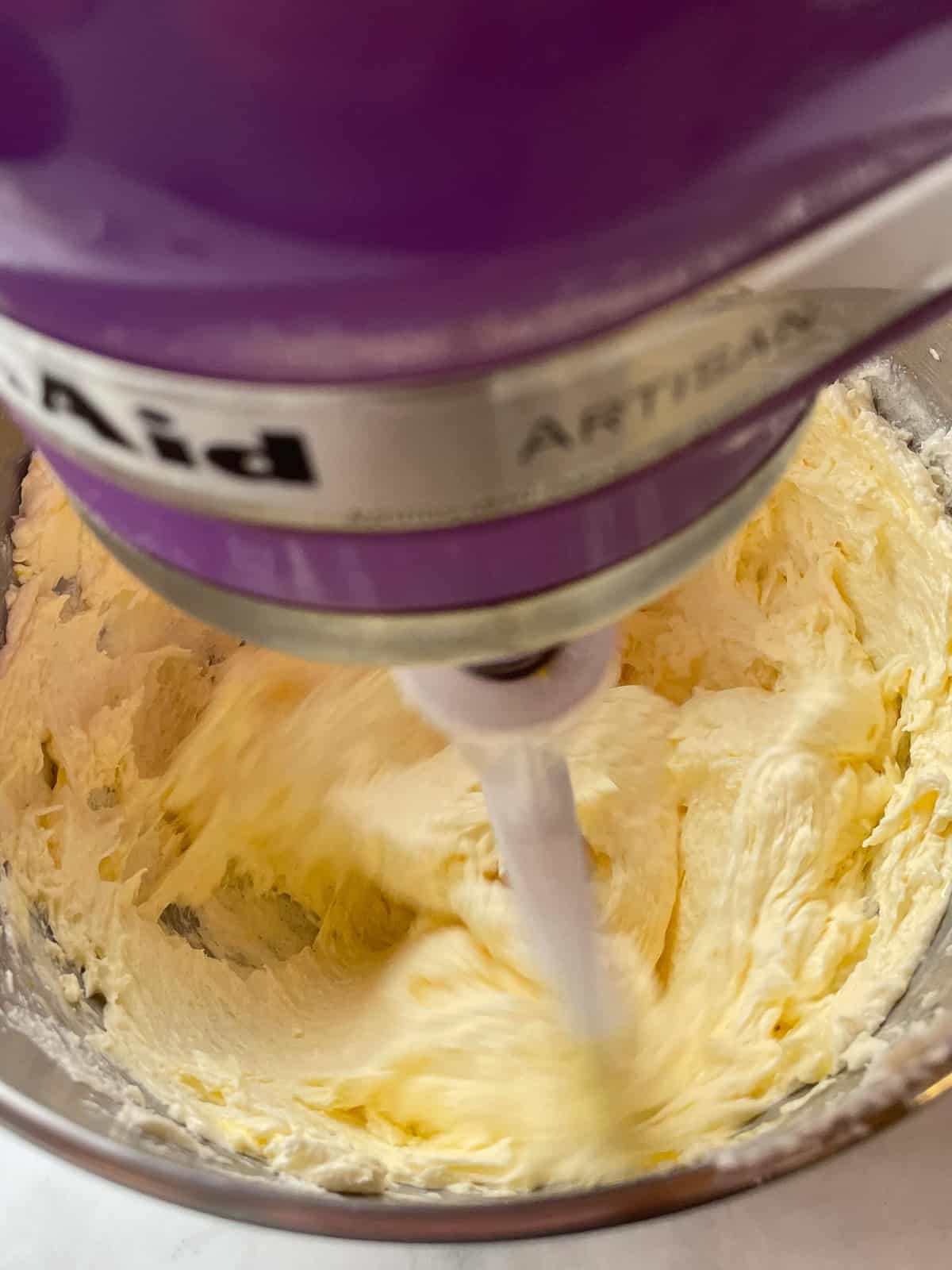
Make the Batter.
Add the gluten-free flour mixture to the butter. Blend on low speed until the batter looks thick and creamy. This only takes about 30 seconds. One last time, scrape the mixing bowl. Blend the batter for another few seconds to incorporate anything that was on the side of the bowl.
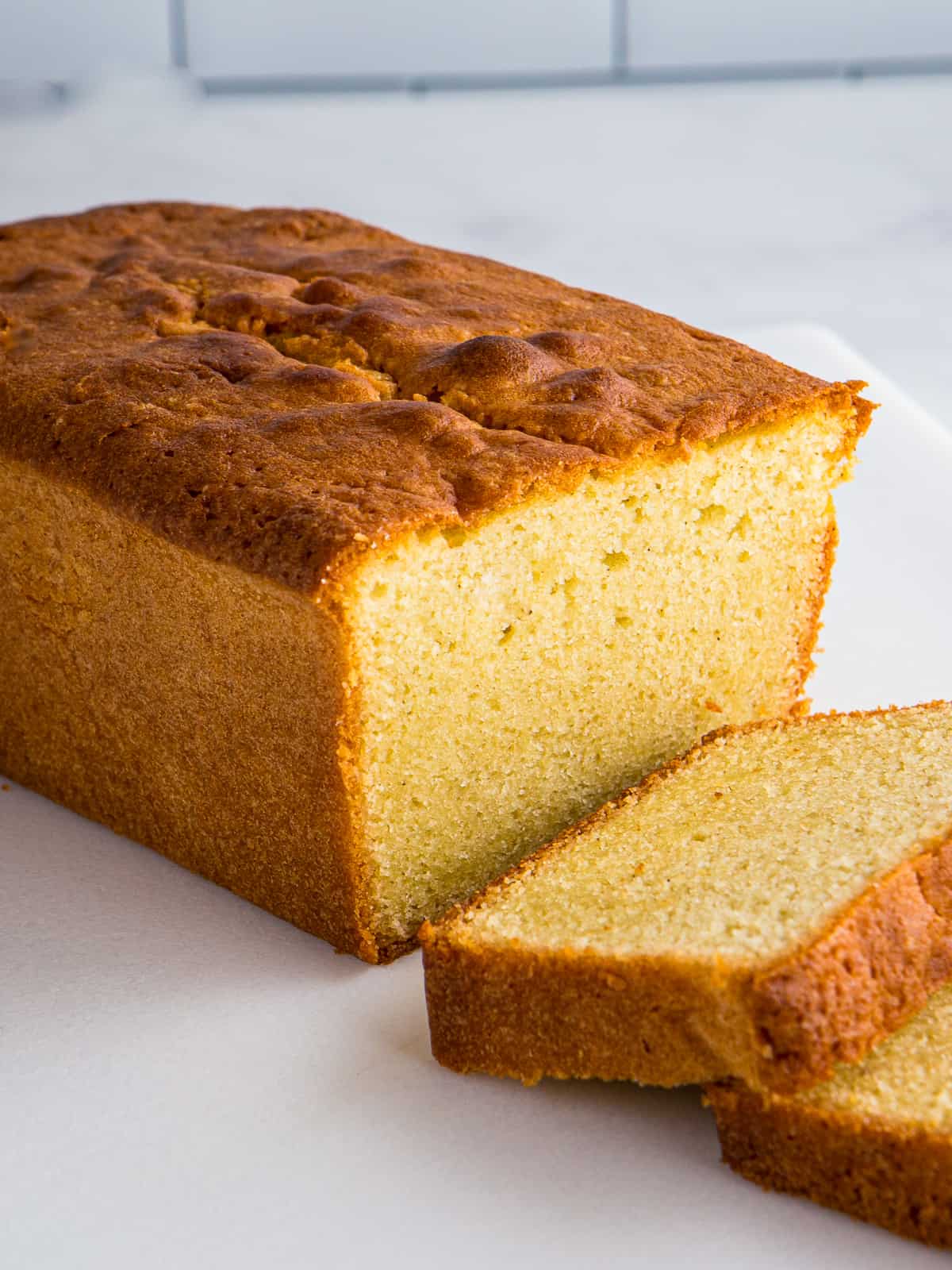
Bake until Brown.
Spread the batter evenly into a greased 9×5-inch loaf pan.
A gluten-free pound cake takes a little over an hour to bake. Bake until the loaf is a deep brown. A cake tester inserted into the center should come out clean.
If you notice the cake starts to get too dark before the center is done, cover it lightly with a piece of foil. Return the pan to the oven to finish baking. The foil prevents the top of the loaf from burning.
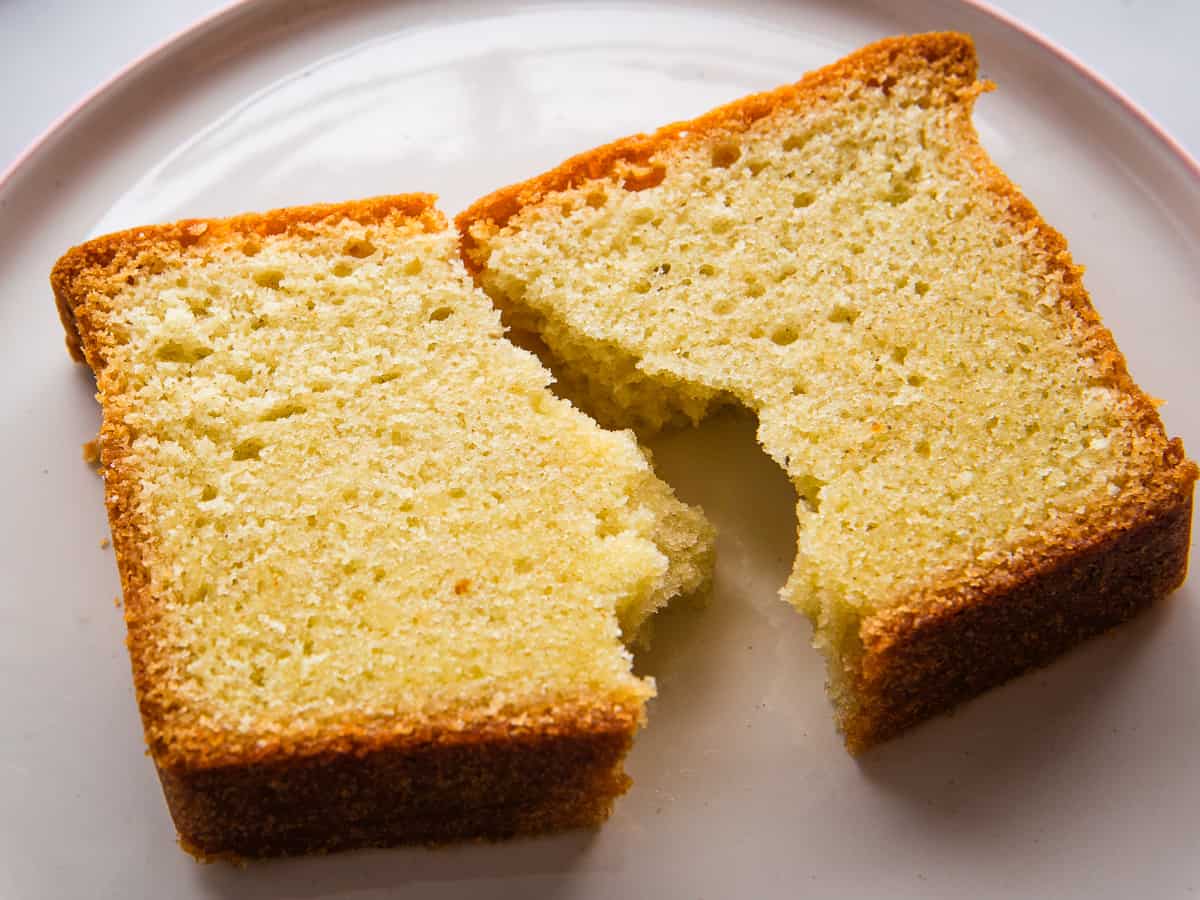
Storage Tips.
Gluten-free pound cakes are great “keepers”. Thanks to the amount of butter and sugar in the cake, they stay fresh for days. It’s important to cover the cake or the cut surface can dry out.
How to Freeze and Thaw a Gluten-Free Pound Cake
Gluten-Free pound cakes freeze beautifully. Here’s what to do.
- Let the cake cool completely. If you freeze a warm gluten-free pound cake, it can get gummy when frozen.
- Wrap tightly. To keep the cake from drying out, wrap it tightly. A layer of plastic wrap and foil is best.
- When ready to eat, remove the pound cake from the freezer. Let it thaw at room temperature. Don’t rush defrosting by placing the cake in an oven. This can dry out the cake.

Gluten-Free Pound Cake
This gluten-free pound cake is dense and buttery. Made with gluten-free flour, butter, sugar, eggs, and just a little baking powder to lighten it.
Ingredients
- 1 ½ cups gluten-free flour (8 ounces; 226 grams)
- 1 teaspoon baking powder
- ½ teaspoon salt
- 1 cup softened butter, about 65°F degrees (8 ounces; 226 grams)
- 1 cup plus 2 tablespoons sugar (8 ounces; 226 grams)
- 5 large eggs (about 9 ounces; 255 grams out of shell)
- 1 teaspoon vanilla extract
Instructions
-
Preheat your oven to 350°F. Lightly grease a 9 x 5-inch loaf pan with nonstick cooking spray or brush with solid shortening and lightly dust with gluten-free flour. Optional: after greasing line the pan with a piece of parchment paper.
-
Whisk the gluten-free flour, baking powder, and salt in a small bowl. Set aside.
-
Mix the soft butter and sugar on medium-high speed until very light, about three minutes. Scrape down the bottom and sides of the bowl to remove the layer of thick butter. Mix for another minute or so to incorporate the thick butter that was clinging to the bowl.
-
Add three eggs, one at a time. It's important to let each egg mix into the butter before adding the next. Don't rush this step.
After the third egg mixes into the batter, stop the mixer. Scrape the bowl and add one tablespoon of the gluten-free flour mix. Turn the mixer to low to blend in the flour.
Add the remaining two eggs, one at a time.
-
After the last egg is added, stop the mixer. Scrape the bottom and sides of the bowl. If you’re using vanilla extract, add it now. Turn the mixer to medium-low. Mix until light and fluffy, about two minutes.
-
Stop the mixer. Add the gluten-free flour blend. Mix on low speed until the flour is incorporated. Then increase the speed to medium and blend until a batter forms.
-
Spread batter evenly into the prepared pan. Fill the pan about ⅔ full.
If your pan is small, set aside about ⅓ cup of batter. You can use the remaining batter to make a cupcake or two.
-
Bake until golden brown, about 60 minutes. A cake tester inserted into the center of the cake should come out clean.
If the top of the cake is getting too brown before the center is baked, place a piece of foil over the pan and finish baking.
-
Let the cake cool in the pan for 10 minutes. Carefully remove the cake from the pan and place it on a wire rack to cool.
-
Store tightly wrapped on the counter for up to four days. Or freeze for up to three months.
Recipe Notes
Ingredient Notes
Gluten-Free Flour. Use a gluten-free flour blend that contains xanthan gum. If your blend doesn’t contain xanthan gum, whisk in ½ teaspoon along with the salt and baking powder.
This recipe was tested with Bob’s Red Mill 1:1 Gluten-Free Flour. Due to the variations in gluten-free flour blends, some blends work better than others.
Butter. It’s important to use softened butter. You want the temperature of the butter around 65°F. If the butter is too cold, it won’t get fluffy and the cake will be dense. If the butter is too soft (when it looks greasy or has melted spots), the cake will turn out dense and greasy.
Eggs. Use room temperature eggs.
Vanilla Extract. The vanilla extract is optional use up to two teaspoons.
Mixing and Baking Notes.
If the butter and sugar mixture looks curdled at any point during mixing, add one tablespoon of the gluten-free flour mixture.
Fill the pan about ⅔ full. If the pan is too full, it can overflow during baking and cause a mess.


Carol says
This is the best gluten free pound cake I have ever made. So many of my other pound cake recipes have been gummy, but not this one. It was just like pound cake should be: buttery, full of flavor, and just the right texture. I followed the directions exactly. I didn’t have Bob’s 1 to 1 mix, but I made a copycat recipe of it. Fantastic recipe! I’m making another pound cake this weekend to freeze and mail to my son for his birthday. Thank you.